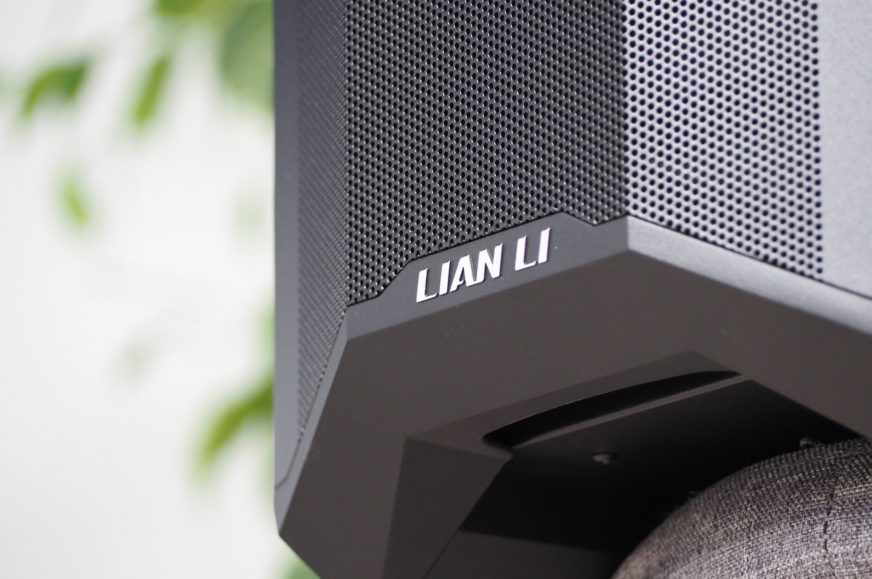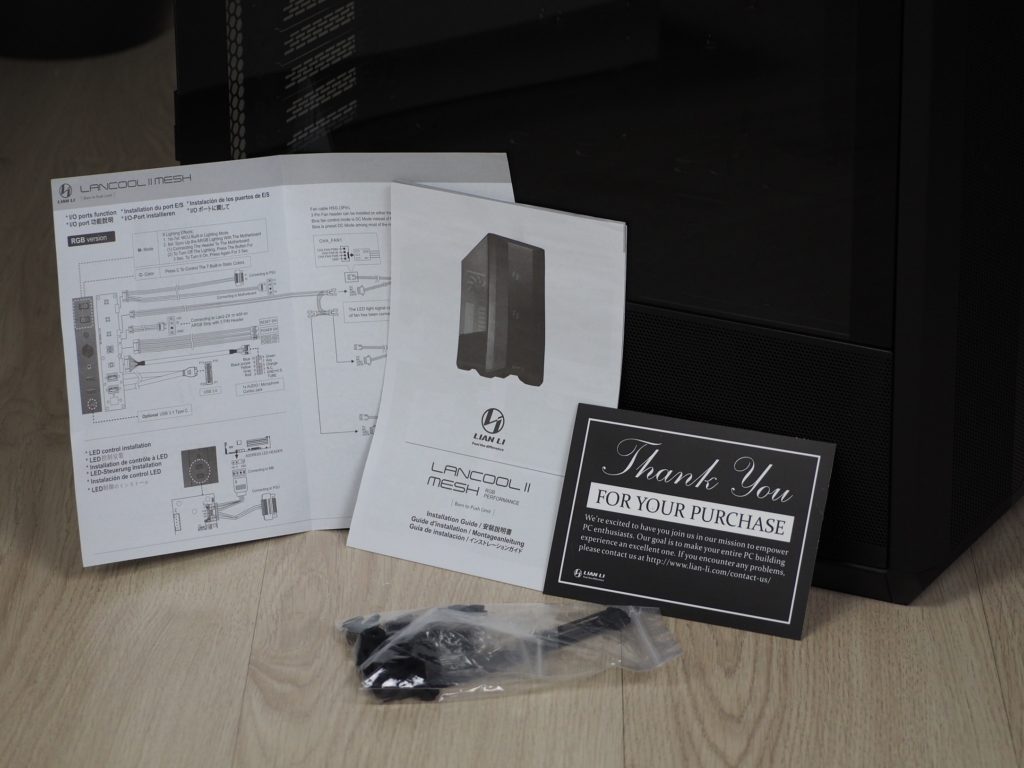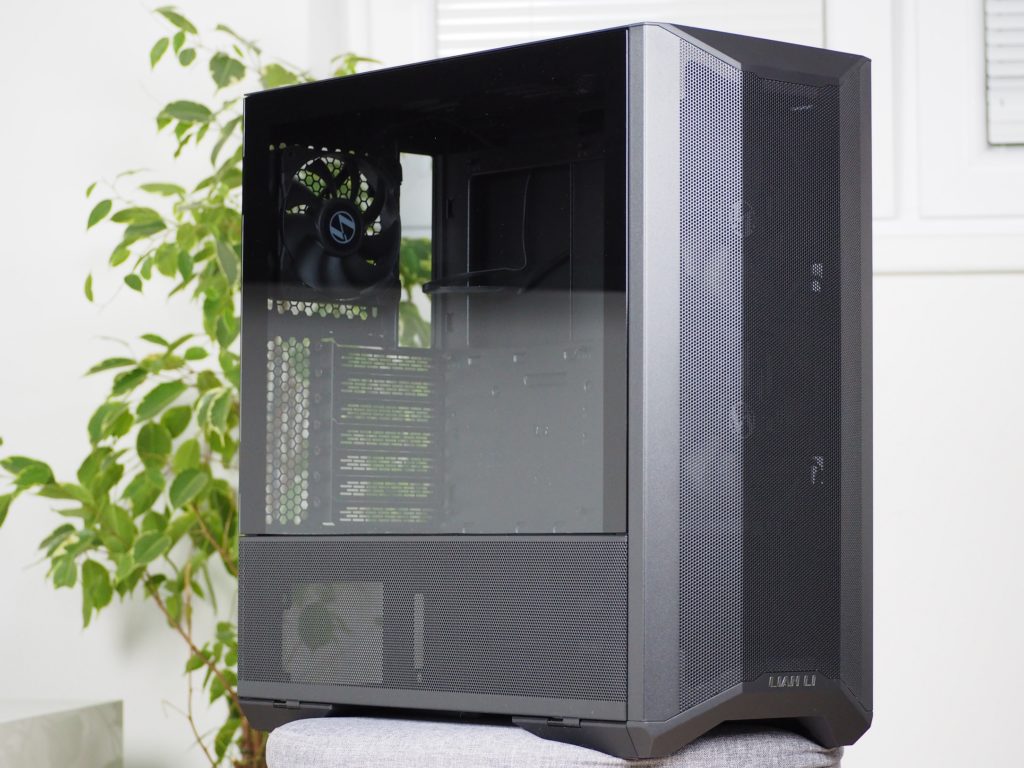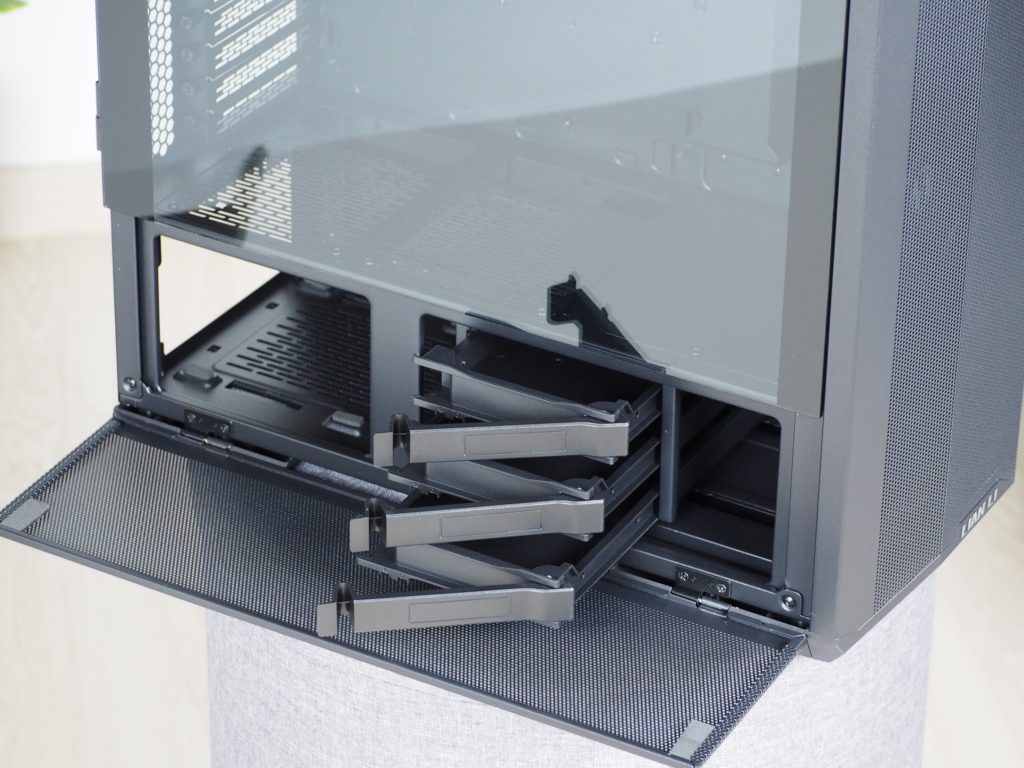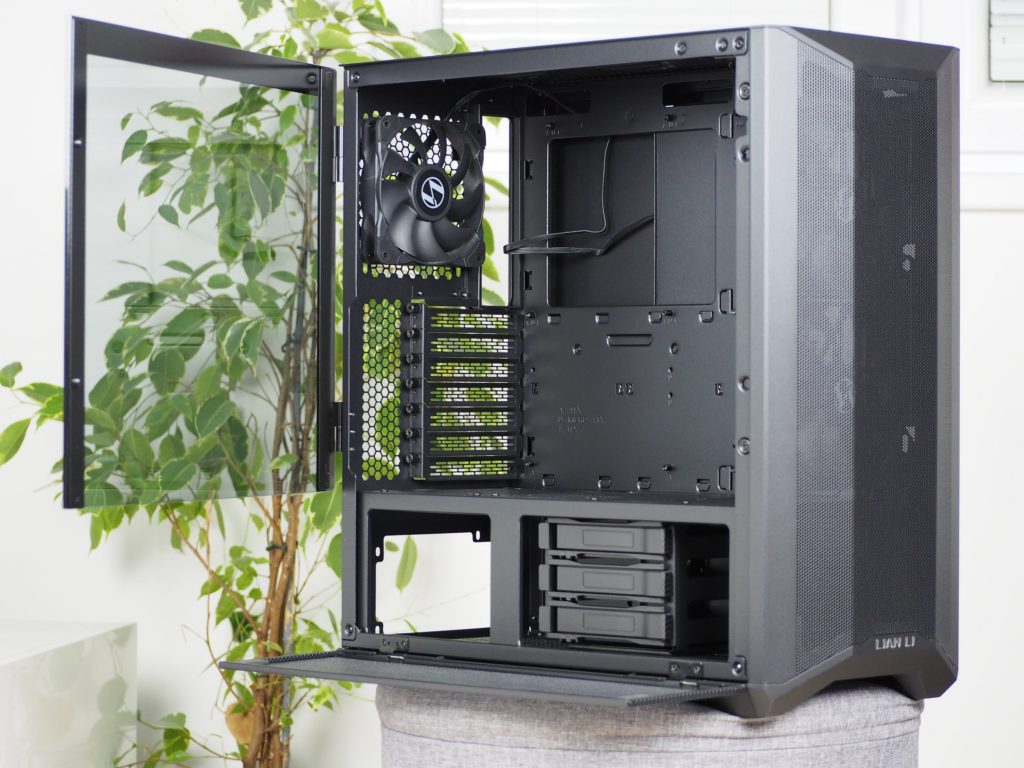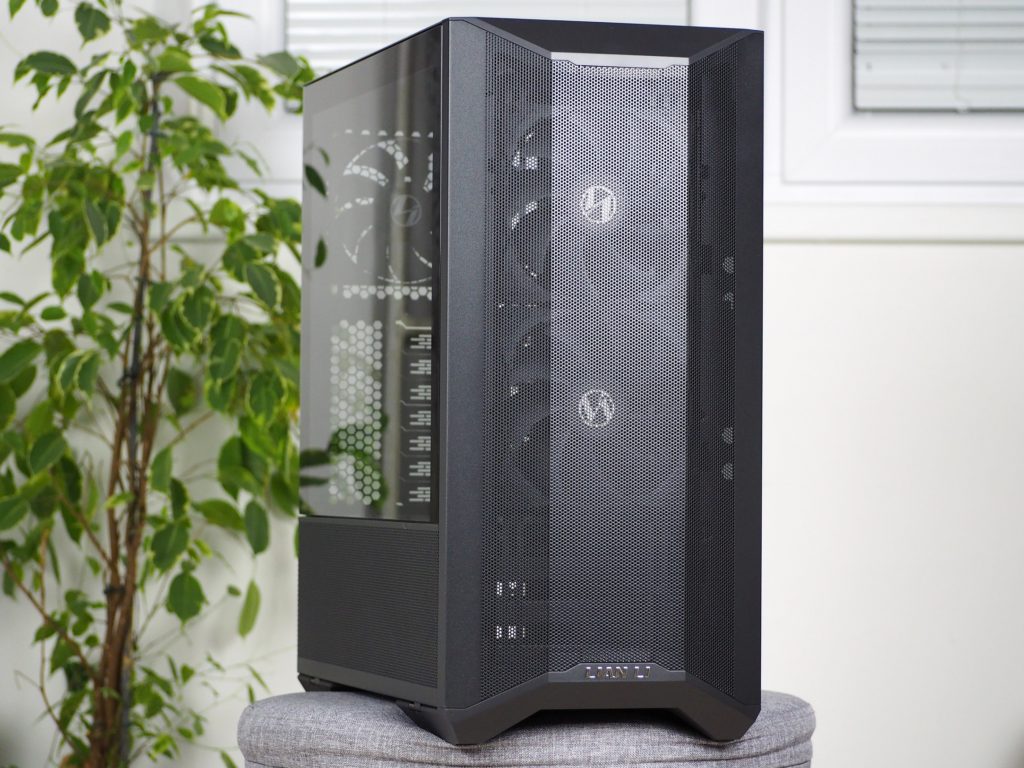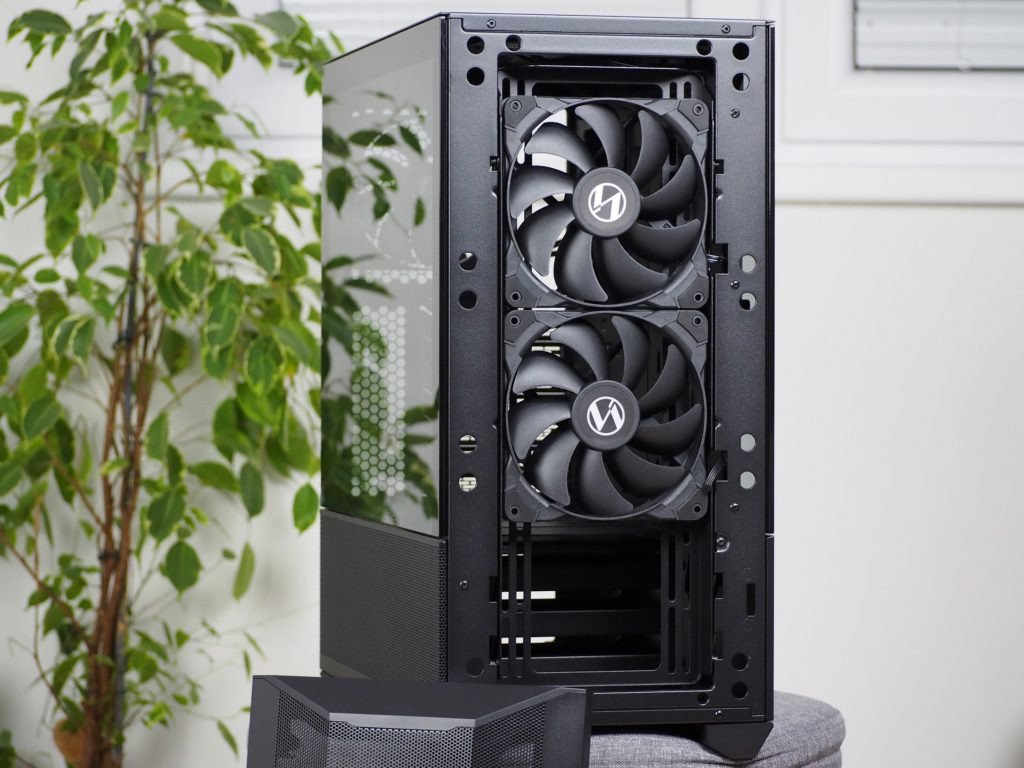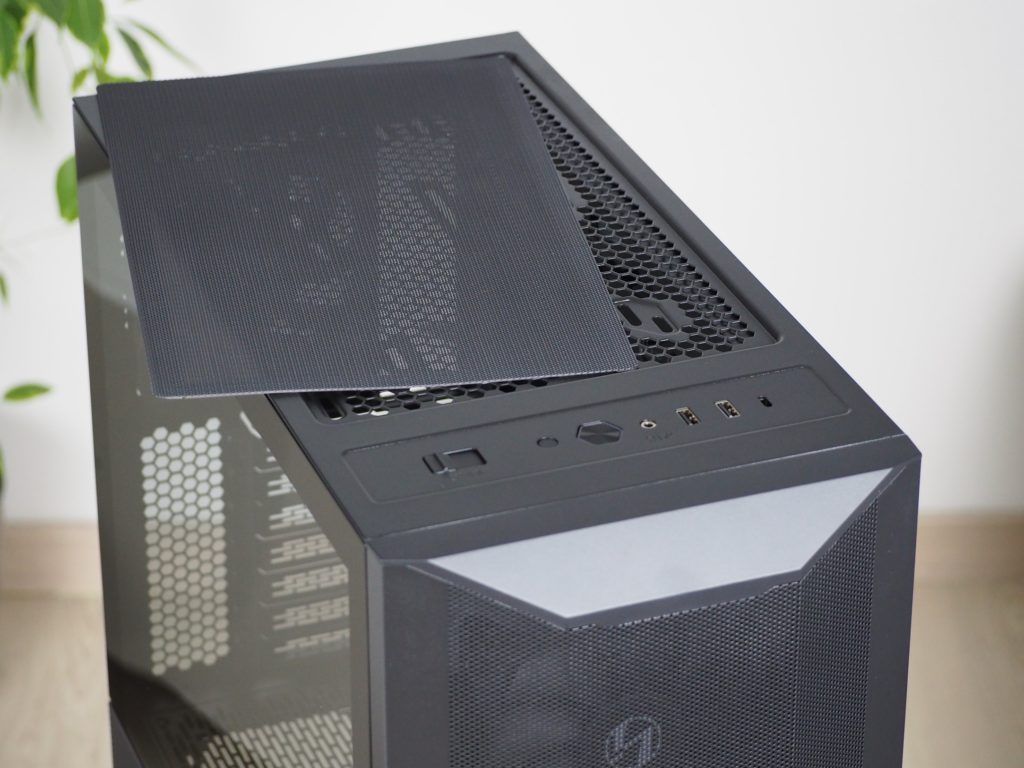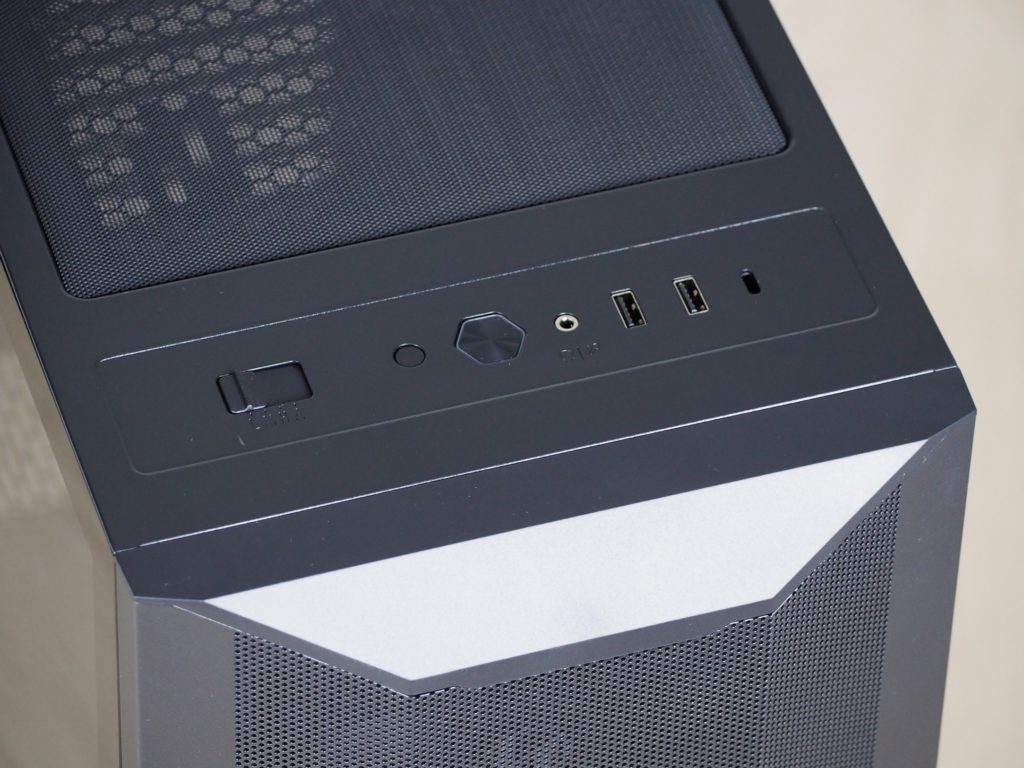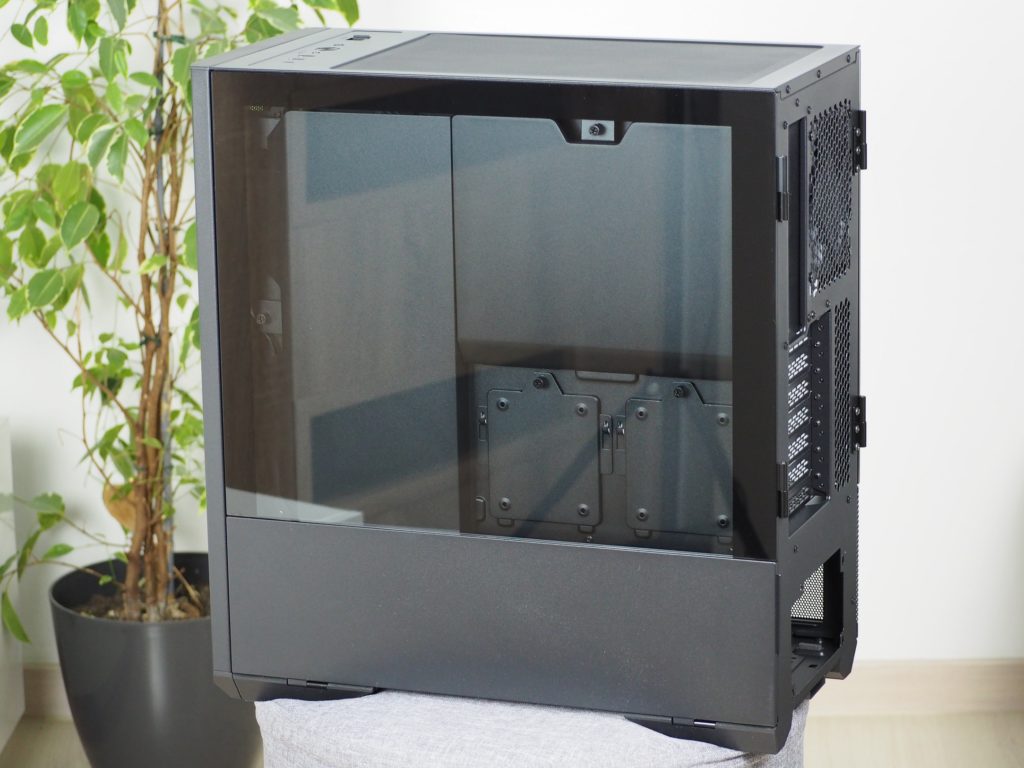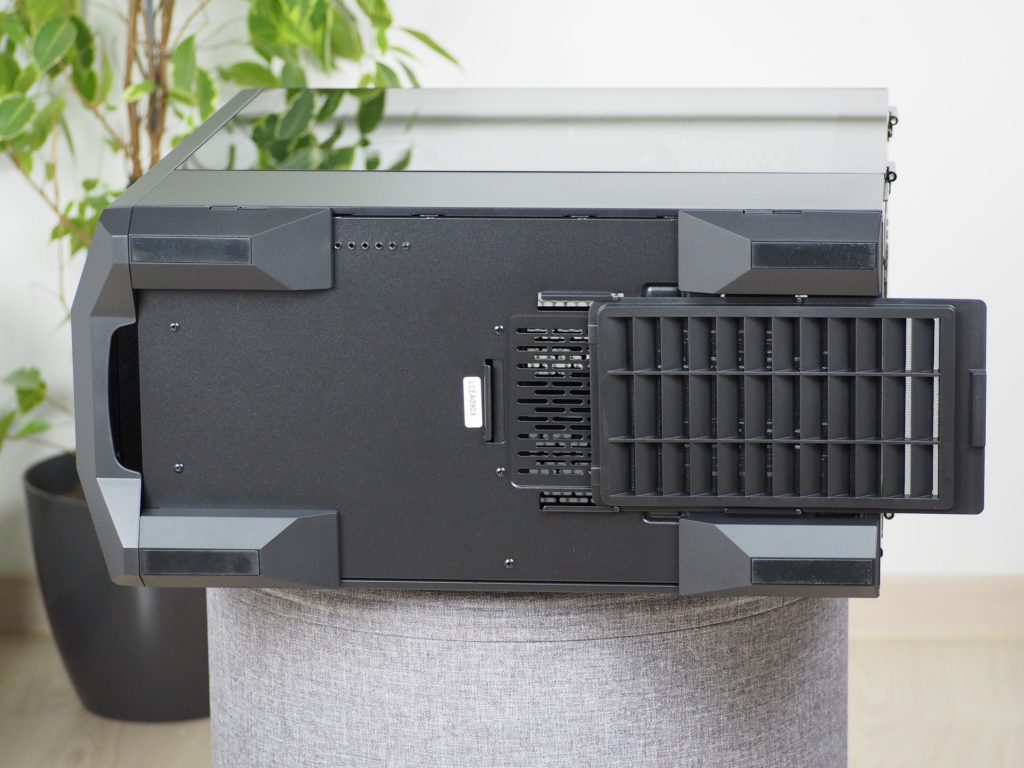Folding exterior
Lian Li Lancool? Lian Li is historically known for using more aluminium than its “steel” competitors. Lancool, on the other hand, was at a time a separate brand for, say, cheaper Lian Li derivatives. But what does a “Lian Li Lancool” Mesh Performance look like? The name promises an emphasis on cooling, but the case is also characterized by the extra modularity of the individual parts.
Basic parameters
| Parameters | Lian Li |
| Lancool II Mesh Performance | |
| Supported motherboard formats | Mini-ITX, mATX, ATX, E-ATX |
| Supported PSU format | ATX (up to 210 mm) |
| CPU cooler | up to 176 mm |
| Graphics cards | up to 384 mm |
| Fan | 1× 120 mm + 2× 140 mm |
| Supported liquid radiators | 2× up to 360 mm + 1× up to 240 mm + 1× 120 mm |
| 2,5" positions | 6 + 3 shared |
| 3,5" positions | 3 shared |
| 5,25" positions | none |
| Dimensions [H/D/W] (and volume) | 494 × 478 × 229 mm (54 l) |
| Weight | 11,8 kg |
| Materials | steel + plastic + tempered glass |
| Connectivity | 2× USB 3.2 gen. 1 + 1× USB 3.2 gen. 1 type C (option accessories) + 1× 3,5mm jack |
| Approximate price | 110 EUR |
Folding exterior
The case accessories are nothing special, but the work on the manual is to be commended. The instructions for installing the case are very detailed and accurate. Apart from that, outside of the case, the package contains only screws and a few pull-tabs to tie the power supply wiring together.
On the left side of the case is a distinctive perforation of the bottom panel below the glass. Taking a closer look at the bottom of it, you can notice that it includes hinges so that it can be opened. You don’t see that that often with cases.
Bottom panel has two magnets on the sides, on which there is a damping foam. It takes considerable force to open, so you don’t have to worry about it opening on its own, for example when transporting the case. The entire panel is used for quick access to the drive “drawer”.
We haven’t forgotten the tempered glass, which is four millimetres thick. Also, the side panel is hinge-mounted, so you don’t need to use tools to quickly manipulate the case. One minor drawback is that you also have to open the bottom panel to open it, as it opens with a grip from underneath. Everywhere else it sits perfectly flush with the structure so there’s nothing to grab it by. The side panel is also held in place by two strong magnets that are embedded in the case’s structure.
Large 1.5 mm diameter holes cover most of the front panel area. The convex shape puts distance between the panel and the fan. At the furthest point it is 45 mm, and so the fans’ performance should not be degraded to a large extent, if at all.
Since the only “protection” against dust is the front panel grille, when you pull it off, you get directly to the two pre-installed 140 mm fans.
According to the manufacturer’s specification, they have an air flow of just under 103 m³/h at maximum speed. This can be adjusted from 600 to 1200 rpm. Lian Li does not sell these fans separately. If you would like to replace the original fans, there is room in the front for a 3×120 mm or a water cooling radiator up to 360 mm in size with a maximum width of 120 mm.
The mounting of the cooling elements is solved in an interesting way. They are placed on a removable panel, which can be mounted in reverse and thus increase the distance from the center of the case. This also reduces the distance of the aforementioned 45 mm from the front panel perforations.
In most cases, it is generally the case that the front of the case is better protected against dust than the top of the case. Here it is reversed and so the grille that covers the top open part of the case has holes of one millimetre in size. It sits slightly lower in the groove than the entire top of the cabinet, so unwanted tampering with it is out of the question. It is held to the case, as are most of its parts, by magnets located around its perimeter. You can also place cooling on the top from the inside. In the case of fans, we are talking about two pieces of either 120 mm or 140 mm size. The water cooling radiator fits up to a maximum length of 240 mm.
The I/O panel is complemented by mechanical control of the fans to three preset percentages of power with one stage for manual control via the board. The lowest setting is 45 %, the middle setting is 75 % and the highest setting is 100 % power.
The panel continues as standard with buttons for restart, power-on, 1×3.5 mm headphone jack with microphone and two USB Type-A connectors. The last hole may hint that USB Type-C is also located here. Unfortunately, it’s just a pre-fit that you have a cover for in the accessory box. If you would like the connector in the case, you have to buy it as an accessory (Lancool-4X) for about 15 euros. At a case price of 110 euros where you don’t get a dust filter on the intake, the lack of a USB Type-C connector is a low blow. On the other hand, you have a choice whether you want it and pay extra or save.
The right side panel is almost indistinguishable from the left one. Tempered glass with 4 mm thickness mounted on hinges. The bottom panel opens in the same way as the one opposite. The only difference is the lack of perforations.
The back of the case is manufactured in the standard way that has been used for a long time. There is an opening for the motherboard I/O panel, next to which a 120 mm fan is installed on beehive-shaped plastic holes. In the middle there are 7 removable covers for the PCI Express expansion card slots. At the bottom there is a hole for an ATX power supply.
Directly below the power supply there is a hole that protects the right dust filter with very fine perforations from dust. At least here they weren’t afraid of that at Lian Li. On the feet can be seen non-slip pads that provide high resistance. With them, the case sticks to the surface as if nailed down. On the front you can see the hole that serves to remove the front panel.
- Contents
- Folding exterior
- Everything customizable
- Test methodology
- CPU and GPU cooling tests
- Motherboard cooling tests
- SSD cooling test and temperature underneath the ceiling
- Conclusion





